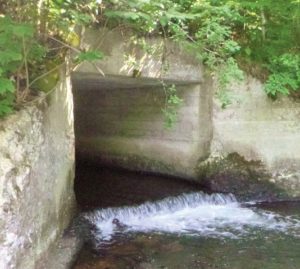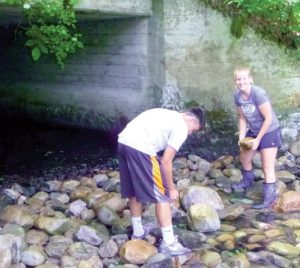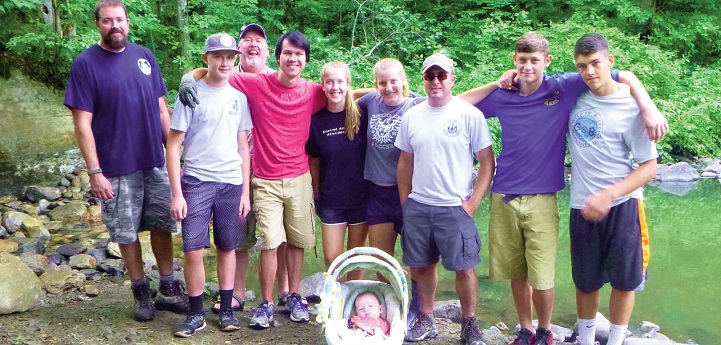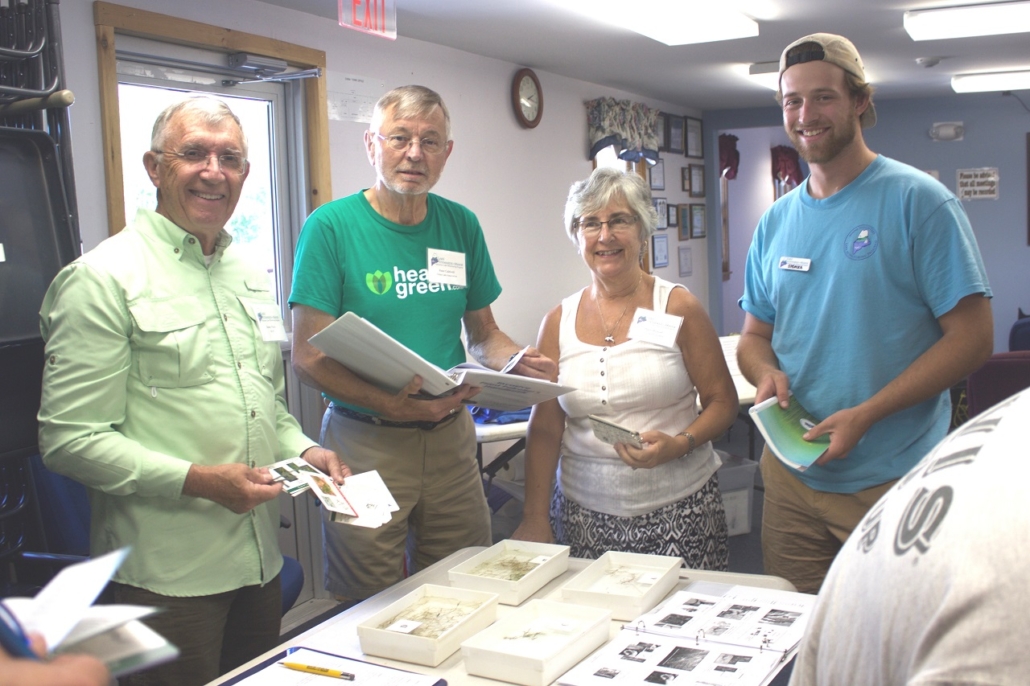
Some of the attendees at the Invasive Plant 101 workshop, held in China on August 24, were, from left to right, Sonny Pierce, of Rangeley Lake Heritage Trust, Peter Caldwell and Marie Michaud, China Lake Association, and Spencer Harriman, of Lake Stewards of Maine. (contributed photo)
by Elaine Philbrook
Friend or Foe?
That was the question on participants’ minds who attended the Invasive Plant 101 Workshop, at China Town Office, on August 20. The workshop was hosted by the China Lake Association and the Kennebec Water Districts. Participants included members of the China Lake Association, the Kennebec Water District, Echo Lake Association, Rangeley Lakes Heritage Trust, the Boothbay Region Water District, folks from the town of Palermo, and year-round and summer residents of China Lake.
The six-hour workshop was presented in four parts:
- Overview of invasive species issues in Maine and the Nation;
- Plant identification fundamentals;
- Plant identification hands-on exercise with live aquatic plants;
- Conducting a screening survey, employing tools and techniques.
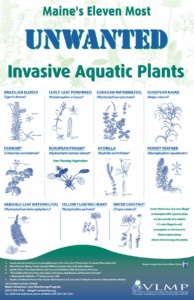
Illustrations for 11 of Maine’s most unwanted invasive aquatic plants.
The overview included information on the negative impact invasive aquatic plants can have, and have had, on ecosystems, economics, recreation, property values, and human health in and around lake communities. A few facts shared about Maine lakes and their economic development are as follows: 640,000 residents recreate on Maine lakes, visitors spend $2.3 billion annually, generating and sustaining $3.5 billion in economic activities, $1.8 billion in annual income from Maine residents and over 50,000 jobs. These figures are from a 2005 study by T. Allen, Center for Tourism Research and Analysis, Maine Congress of Lakes Association.
The town of China benefits through the taxes generated from lake property owners, both year-round and seasonal. China residents and others enjoy the natural beauty and recreational activities the lake provides. These same activities and pleasures are shared by people visiting for a day or vacationing for a longer period of time. If China Lake or Three Mile Pond where to become infested by an invasive plant these recreational activities would be jeopardized. The cost on the community can be phenomenal, from the loss of tax revenue to the expense of plant removal. Early detection of an invasive aquatic plant will insure that the activities and financial benefits that we all enjoy from experiencing our lakes will continue uninterrupted.
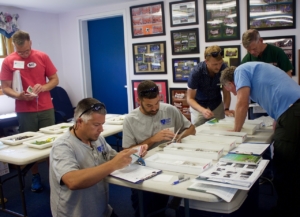
One of the working groups at the Invasive Plants Workshop 101.
The second and third parts of the workshop were about the 11 aquatic invasive plants, their native look-a-likes, and what to do if you find a suspicious plant. If you think you have found an invasive plant you should mark the sport where you found it, take a photo or obtain a sample of the plant, and contact your local identification representative on invasive plants (Elaine Philbrook) to help with identification (or follow the directions on the Lake Stewards of Maine web site: https://www.lakestewardsofmaine.org/reporting-aquatic-species-6/). A word of caution, when gathering a sample of a suspicious plant, be careful to gather all the fragments of the plant. Invasive plants are able to propagate from very small plant fragments.
The final part of the workshop covered how to conduct a lake screening survey and use helpful tools. A screening survey consists of people who have had training to identify invasive aquatic plants. Participants choose or are assigned an area on the lake to watch for suspicious plants. Once a year they report their findings to the lead supervisor. A survey can take place anytime during the year you can get out on the water. The best time to do a survey is between mid-July to early fall because plants are in bloom.
To become a “screener” you need to be trained. Trainings can be a six-hour Invasive Plant 101 workshop, or three-hour Invasive Plant Paddle; both are offered by the Lake Stewards of Maine. A third option is an Invasive Plant Paddle offered by a trained local resident.
If you are interested in becoming part of the screening survey team contact Elaine Philbrook at esphilbrook@gmail.com. The goal of the China Lake Association is to have enough trained people available to develop a screening survey team that will continuously monitor the China Lake.






